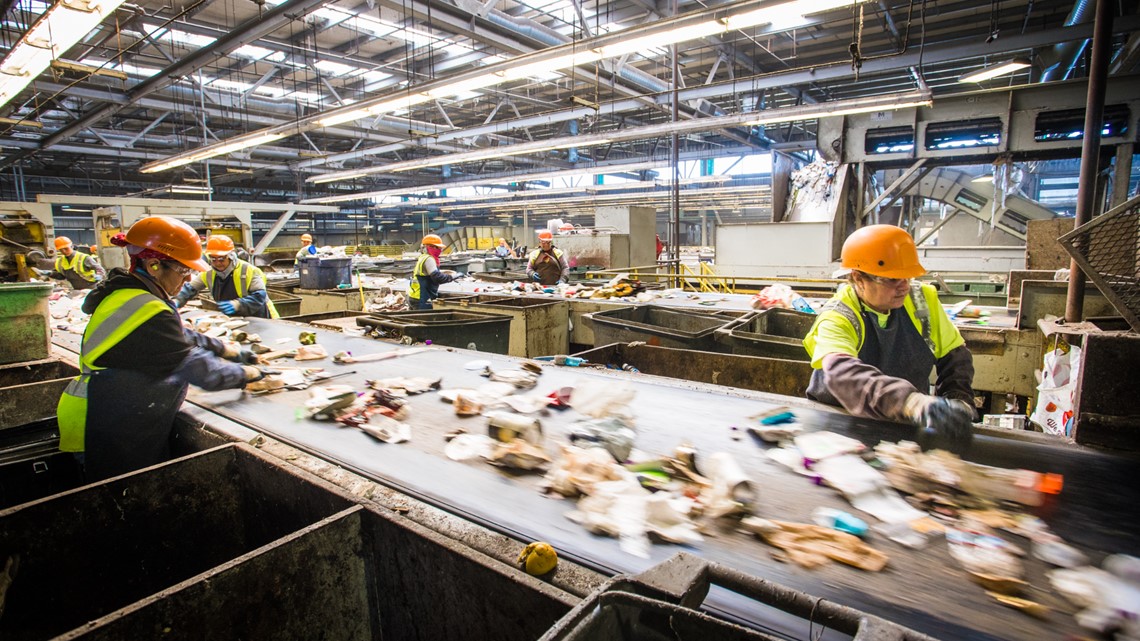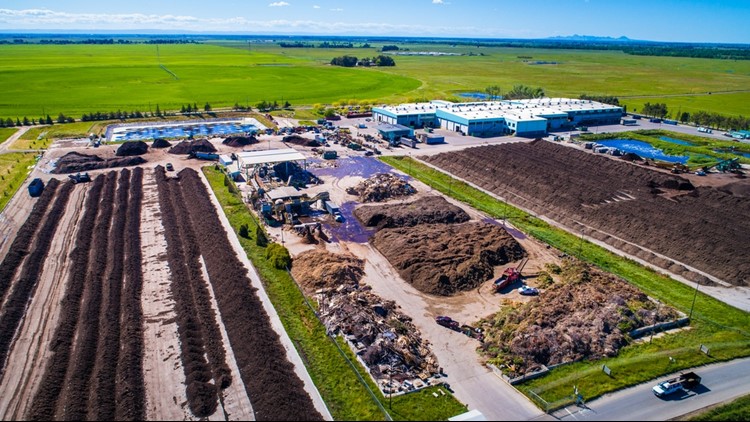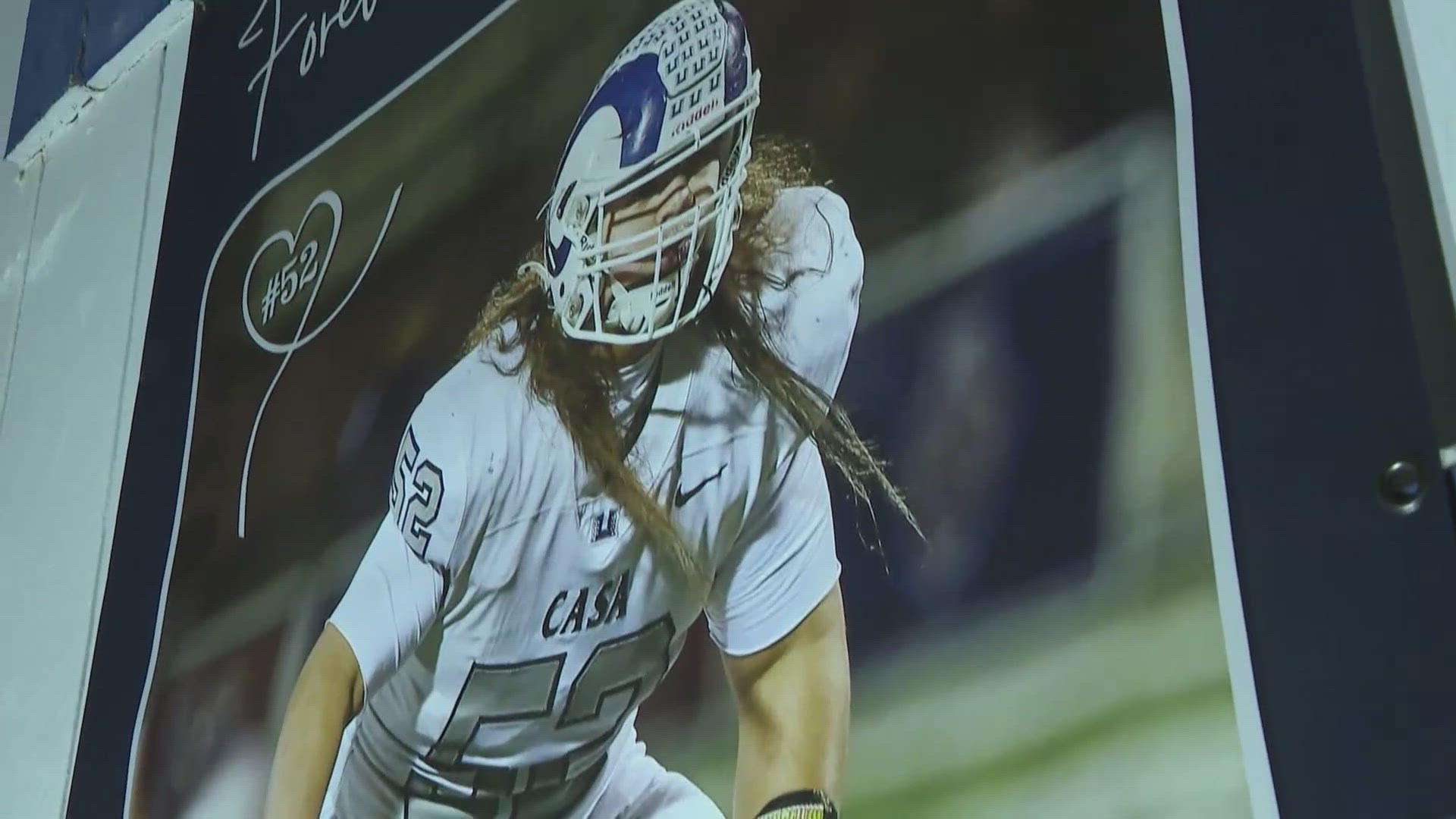PLACER COUNTY, Calif. — Recycling for residents in Placer County looks a little bit different compared to other parts of California.
There is one combined trash and recycling bin and the recyclables are sorted at a Materials Recovery Facility (MRF). This is managed by a Joint Powers Authority, which includes Roseville, Lincoln, Rocklin and Placer County.
"When we built our recovery facility, that effectively kicked off the one big system, and for the most part, it didn't change what folks did with their waste. It changed how we managed it afterward," said Eric Oddo, the program manager for the Western Placer Waste Management Authority.
Oddo said when the program was first instituted, the county was more rural than it is now.
"With the folks being as spread out as they were, if you had three different bins for materials, you could have up to three different trucks servicing every address — whereas now we've been able to consolidate that," Oddo said.
In more densely populated cities like San Francisco or Los Angeles, Oddo says a three-bin system can work well.
However, no matter how many bins are used to recycle, Maria West, a spokesperson for CalRecycle, said the amount of trash is overwhelming — and it's a growing problem.
"Every year, California discards enough plastic to fill 352 Rose Bowl stadiums. Every minute, about one garbage truck worth of plastic is dumped into the ocean (8 million tons a year). By 2050, the ocean will have more plastic than fish," West told ABC10.
Recycling Market Trends


One way to look at the success of a recycling program is to look at the amount of material that is diverted through the process. Oddo said there is a 50% diversion requirement and over the years, the joint powers authority has exceeded the state average.
However, the amount of material that can be diverted depends on what can be sold.
"Whether something is technically recyclable is a bit irrelevant. I hate to say, it's ultimately if someone is willing to buy that product. That's what makes it recyclable," Oddo said.
He said recycling markets go up and down just like the stock market.
"So markets really drive what is recovered and kept out of landfills and I'm not going to name any names, but it's a dirty little secret up and down California of recycling operations where people set their materials out in the blue bin thinking it's going to get recycled and that there's no market," Oddo said.
This can sometimes be referred to as "wish cycling" or putting something in a recycling bin and hoping it can be recycled. But, it can also come from a place of confusion.
The chasing arrows that form a triangle have become a symbol synonymous with recycling and in turn, can lead people to assume that products with that symbol on them can and will be recycled.
"A high percentage of Californians believe that the chasing arrows symbol on a product means it’s recyclable in our state," Maria West, a spokesperson for CalRecycle, said.
While California doesn't currently have legal standards or a process for labeling a product with the chasing arrow, that is changing with a new law.
"Once the rules and processes are in place, products will only be allowed to be sold with the chasing arrow on them if they are recycled by 60% of the communities in California," West said.
Oddo said the nuance in what can be recycled also comes in when part of a product is recyclable, but because of how it's packaged, it doesn't end up being recycled. For example, some packages used to ship products have a paper envelope exterior, but include a foam lining that recycling operations generally won't take.
Many residents in Placer County generally don't need to distinguish these products because it all goes in one bin.
"It'll have a little recycling symbol and you think that it's all good to throw out in your paper bin, and it's probably ended up in the landfill. Those are things that it's tough for people to make those decisions because they don't deal with this day in and day out and that's the benefit of our operations," Oddo said.
Communities that have a recycling bin as part of their program often focus on the core products that can be recycled, such as cardboard, paper and glass bottles, according to Oddo. But he said Placer County can adjust based on small market fluctuations.
"Our operator can recover whatever they can market and it ends up expanding what is really recyclable versus what you know most other cities and counties look at as being consistently marketable," Oddo said.
Does Placer County really recycle?
Placer County's website even has a frequently asked questions page where the first question is "Why don't I have a recycle bin?"
A blue bin is a common indicator throughout California of recycling, but it's something you won't see on the streets come garbage day in Placer County.
For people who are used to separating materials and meticulously cleaning out recyclables before putting them in the bin, the thought of mixing trash and recycling together may be surprising.
"Our facility and our operator has been able to market an enormous amount of material over its lifespan and that's with the material coming in mixed with food and dirt and everything else," Oddo said. "In some cases, the recyclables may be a little bit dirtier than what they would in a three-bin system, and the buyers of that product know that. So maybe the value of that product on the market is slightly lower, but it's all about consistency."


For those with a separate recycling bin, though, CalRecycle recommends only putting empty and dry recycling in the bin because "excess food or liquids contaminating other recyclables can make them hard to recycle."
West said that confusion or uncertainty about how much gets recycled may result in people giving up on separating recycling from their trash.
"Stuff ends up in the landfill and if people knew that I think there'd be much more of an outcry. We never have to say that because we only pull out what we know we can market," Oddo said.
Residents in Placer County can still recycle on their own through various services offered throughout the county HERE.
"There's a lot of folks that don't like our system because it doesn't require people to take that action up front and separate out the recyclables — that doesn't mean it's any less effective though," Oddo said.
Take a virtual tour of the MRF HERE.
Organics recycling
With recent changes in the recycling world, Oddo said they're in the process of revamping their sorting system.
"Probably within a year we're going to gut it all and start fresh with the newest technology," Oddo said.
The new system will also help the county comply with SB-1383, a bill signed into law in 2016 by former Gov. Jerry Brown aimed at reducing methane in landfills by composting organic waste. The law went into effect in 2022.
"What we're trying to do with our master planning effort is be able to facilitate the sighting of new and emerging technologies or even well-defined technologies to improve those markets and improve them locally so that we get the benefit we have stable market systems," Oddo said. "We're able to pull out more material and keep it out of landfills, so taking control of our destiny, so to speak."


Roseville
Roseville, the largest city in Placer County, is looking at potentially adding a third bin to comply with SB-1383.
Roseville is part of the Joint Powers Authority, which includes Lincoln, Rocklin and Placer County. That means they operate under the one bin system where trash and recycling go in one bin and green waste goes in a second bin.
Maurice Chaney, Roseville's public information officer for environmental utilities, said if the city decides to move to three bins, there will need to be educational outreach.
"There's some concerns and some cons about having your own recycling bin, because sometimes people just throw everything in there, not realizing that depending on the type of plastic you use, that might not be recyclable," Chaney said.
Chaney said the goal is to have a program citywide by the end of 2022.
Oddo said they will accommodate the change if it happens.
"If that's how they feel that they need to manage their waste, we're going to work with them, accommodate that. But, what we're finding is that it's not a necessity. We can continue to operate as a one bin system and ensure our jurisdictions are in compliance with the current regulations and the future organic regulations," Oddo said.
Find more information about what Placer County residents shouldn't put in their bin HERE.
Find more tips on recycling in your local area HERE.
Watch more




